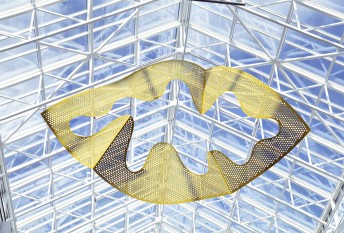History of the percent-for-art principle
The history of the percent-for-art principle in Finland goes back to the start of the last century, with plans being made to introduce it as early as the 1920s. In its 1939 budget forecast, the Finnish government proposed that, out of the renovation funds granted for the more important public buildings, a maximum of one percent could be used for the artistic decoration of the building, where the type and purpose of the building permitted it. Parliament approved the government’s proposal. The war, however, prevented the decision being carried out in practice. The percent-for-art principle also gradually shifted from the national level to municipal decision-making.
During the construction of the welfare state in the 1960s, art policy became an integral part of planned social policy. The cultural policy of the welfare state was founded on the western concept of democracy, whose main starting point was the equality of all citizens. Art and cultural services should be accessible to all citizens regardless of where they live or their social status.
Percent-for-art artworks are as a rule fixed in place in the building’s indoor or outdoor spaces as permanent art acquisitions. Public artworks can serve as identity symbols for an area, and enhance a community’s mental and economic wellbeing. The everyday living environment and, through that, urban planning and design, play a significant role in individual development and wellbeing.
The application of the percent-for-art principle in public art projects is one way of trying to meet the aim of the welfare society to create an enjoyable, stimulating living environment.

